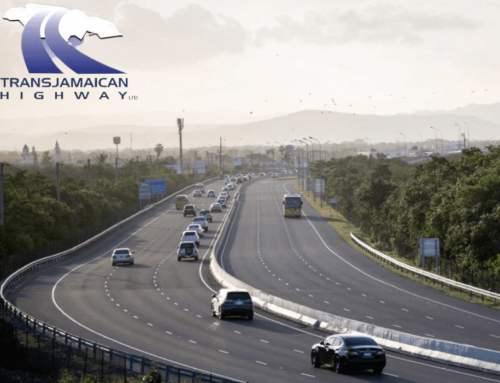[fusion_builder_container hundred_percent=”no” hundred_percent_height=”no” hundred_percent_height_scroll=”no” hundred_percent_height_center_content=”yes” equal_height_columns=”no” hide_on_mobile=”small-visibility,medium-visibility,large-visibility” status=”published” background_position=”center center” background_repeat=”no-repeat” fade=”no” background_parallax=”none” enable_mobile=”no” parallax_speed=”0.3″ video_aspect_ratio=”16:9″ video_loop=”yes” video_mute=”yes” border_style=”solid” padding_top=”0px” admin_label=”Video Intro” padding_bottom=”0px” type=”legacy”][fusion_builder_row][fusion_global id=”1510″][fusion_builder_column type=”1_1″ layout=”1_1″ align_self=”auto” content_layout=”column” align_content=”flex-start” content_wrap=”wrap” spacing=”” center_content=”no” link=”” target=”_self” min_height=”” hide_on_mobile=”small-visibility,medium-visibility,large-visibility” sticky_display=”normal,sticky” class=”” id=”” background_image_id=”” type_medium=”” type_small=”” order_medium=”0″ order_small=”0″ spacing_left_medium=”” spacing_right_medium=”” spacing_left_small=”” spacing_right_small=”” spacing_left=”” spacing_right=”” margin_top_medium=”” margin_bottom_medium=”” margin_top_small=”” margin_bottom_small=”” margin_top=”0px” margin_bottom=”” padding_top_medium=”” padding_right_medium=”” padding_bottom_medium=”” padding_left_medium=”” padding_top_small=”” padding_right_small=”” padding_bottom_small=”” padding_left_small=”” padding_top=”” padding_right=”” padding_bottom=”” padding_left=”” hover_type=”none” border_sizes_top=”0px” border_sizes_right=”0px” border_sizes_bottom=”0px” border_sizes_left=”0px” border_color=”” border_style=”solid” border_radius_top_left=”” border_radius_top_right=”” border_radius_bottom_right=”” border_radius_bottom_left=”” box_shadow=”no” box_shadow_vertical=”6px” box_shadow_horizontal=”0px” box_shadow_blur=”36″ box_shadow_spread=”0″ box_shadow_color=”rgba(68,64,90,0.1)” box_shadow_style=”” background_type=”single” gradient_start_color=”” gradient_end_color=”” gradient_start_position=”0″ gradient_end_position=”100″ gradient_type=”linear” radial_direction=”center center” linear_angle=”180″ background_color=”” background_image=”” background_position=”left top” background_repeat=”no-repeat” background_blend_mode=”none” animation_type=”” animation_direction=”left” animation_speed=”0.3″ animation_offset=”” filter_type=”regular” filter_hue=”0″ filter_saturation=”100″ filter_brightness=”100″ filter_contrast=”100″ filter_invert=”0″ filter_sepia=”0″ filter_opacity=”100″ filter_blur=”0″ filter_hue_hover=”0″ filter_saturation_hover=”100″ filter_brightness_hover=”100″ filter_contrast_hover=”100″ filter_invert_hover=”0″ filter_sepia_hover=”0″ filter_opacity_hover=”100″ filter_blur_hover=”0″ last=”true” border_position=”all” first=”true” type=”1_1″][fusion_imageframe image_id=”695|full” max_width=”800px” sticky_max_width=”” style_type=”” blur=”” stylecolor=”” hover_type=”liftup” bordersize=”” bordercolor=”” borderradius=”8px” align_medium=”none” align_small=”none” align=”center” margin_top=”” margin_right=”” margin_bottom=”” margin_left=”” lightbox=”no” gallery_id=”” lightbox_image=”” lightbox_image_id=”” alt=”” link=”” linktarget=”_self” hide_on_mobile=”small-visibility,medium-visibility,large-visibility” sticky_display=”normal,sticky” class=”” id=”” animation_type=”” animation_direction=”left” animation_speed=”0.3″ animation_offset=”” filter_hue=”0″ filter_saturation=”100″ filter_brightness=”100″ filter_contrast=”100″ filter_invert=”0″ filter_sepia=”0″ filter_opacity=”100″ filter_blur=”0″ filter_hue_hover=”0″ filter_saturation_hover=”100″ filter_brightness_hover=”100″ filter_contrast_hover=”100″ filter_invert_hover=”0″ filter_sepia_hover=”0″ filter_opacity_hover=”100″ filter_blur_hover=”0″ dynamic_params=”eyJlbGVtZW50X2NvbnRlbnQiOnsiZGF0YSI6InBvc3RfZmVhdHVyZWRfaW1hZ2UiLCJlbGVtZW50X2NvbnRlbnQiOiJodHRwOi8va2FsaWxhaHJleW5vbGRzLmNvbS93cC1jb250ZW50L3VwbG9hZHMvMjAxOS8wOS9ibG9nLXBvc3QtNC5qcGciLCJiZWZvcmUiOiIiLCJhZnRlciI6IiIsImZhbGxiYWNrIjoiIn19″]http://kalilahreynolds.com/wp-content/uploads/2019/09/blog-post-4.jpg[/fusion_imageframe][/fusion_builder_column][/fusion_builder_row][/fusion_builder_container][fusion_builder_container hundred_percent=”no” hundred_percent_height=”no” hundred_percent_height_scroll=”no” hundred_percent_height_center_content=”yes” equal_height_columns=”no” hide_on_mobile=”small-visibility,medium-visibility,large-visibility” status=”published” background_position=”center center” background_repeat=”no-repeat” fade=”no” background_parallax=”none” enable_mobile=”no” parallax_speed=”0.3″ video_aspect_ratio=”16:9″ video_loop=”yes” video_mute=”yes” border_style=”solid” padding_top=”0px” padding_bottom=”0px” admin_label=”Content” type=”legacy”][fusion_builder_row][fusion_builder_column type=”1_1″ layout=”1_1″ spacing=”2%” center_content=”no” link=”” target=”_self” min_height=”” hide_on_mobile=”small-visibility,medium-visibility,large-visibility” class=”” id=”” background_color=”#ffffff” background_image=”” background_image_id=”” background_position=”left top” background_repeat=”no-repeat” hover_type=”none” border_color=”” border_style=”solid” border_position=”bottom” box_shadow=”yes” box_shadow_blur=”34″ box_shadow_spread=”0″ box_shadow_color=”rgba(68,64,90,0.07)” box_shadow_style=”” animation_type=”” animation_direction=”left” animation_speed=”0.3″ animation_offset=”” first=”true” last=”true” element_content=”” padding_top=”0%” padding_right=”8%” padding_bottom=”7%” padding_left=”8%” border_radius_top_left=”8px” border_radius_top_right=”8px” border_radius_bottom_left=”8px” border_radius_bottom_right=”8px” box_shadow_vertical=”4px” box_shadow_horizontal=”0px” margin_bottom=”0px” margin_top=”” border_sizes_bottom=”0px” type=”1_1″][fusion_title title_type=”text” rotation_effect=”bounceIn” display_time=”1200″ highlight_effect=”circle” loop_animation=”off” highlight_width=”9″ highlight_top_margin=”0″ before_text=”” rotation_text=”” highlight_text=”” after_text=”” hide_on_mobile=”small-visibility,medium-visibility,large-visibility” sticky_display=”normal,sticky” class=”” id=”” content_align_medium=”” content_align_small=”” content_align=”left” size=”2″ font_size=”42px” animated_font_size=”” fusion_font_family_title_font=”” fusion_font_variant_title_font=”” line_height=”” letter_spacing=”-1px” text_shadow=”no” text_shadow_vertical=”” text_shadow_horizontal=”” text_shadow_blur=”0″ text_shadow_color=”” margin_top_medium=”” margin_bottom_medium=”” margin_top_small=”” margin_bottom_small=”” margin_top=”” margin_bottom=”” margin_top_mobile=”” margin_bottom_mobile=”” text_color=”” animated_text_color=”” highlight_color=”” style_type=”default” sep_color=”” animation_type=”” animation_direction=”left” animation_speed=”0.3″ animation_offset=”” dynamic_params=”eyJlbGVtZW50X2NvbnRlbnQiOnsiZGF0YSI6InBvc3RfdGl0bGUiLCJlbGVtZW50X2NvbnRlbnQiOiIiLCJpbmNsdWRlX2NvbnRleHQiOiJubyIsImJlZm9yZSI6IiIsImFmdGVyIjoiIiwiZmFsbGJhY2siOiIifX0=” /][fusion_text columns=”1″ column_min_width=”” column_spacing=”” rule_style=”default” rule_size=”” rule_color=”” content_alignment_medium=”” content_alignment_small=”” content_alignment=”” hide_on_mobile=”small-visibility,medium-visibility,large-visibility” sticky_display=”normal,sticky” class=”” id=”” font_size=”” fusion_font_family_text_font=”” fusion_font_variant_text_font=”” line_height=”” letter_spacing=”” text_color=”” animation_type=”” animation_direction=”left” animation_speed=”0.3″ animation_offset=””]
By Ricardo Case
Director of Engineering Services, JPS
The Minister of Energy, the Hon. Daryl Vaz in his presentation at the Caribbean Renewable Energy Forum (CREF) held virtually last month, hinted that Jamaica has set a goal that 10% of transportation should be powered by electric vehicles by 2030. In other words, one of every 10 vehicles on the road would be electric. This is a bold and progressive pronouncement as Jamaica seeks to meet our Nationally Determined Contributions (NDC) under the Paris Agreement and made with the knowledge that the goal will not be achieved by the current transition of power generation to renewables. This goal would also see a significant reduction in oil imports and the associated pressure on the exchange rate and result in tremendous savings to the government’s purse.
As I anticipate that financial incentives, public awareness and education to support this mandate will be forthcoming, my article seeks to look at the simple fuel economy of operating an electric vehicle (EV) in Jamaica. Two questions I get asked very often are, how much cheaper will it be and what happens when I need to recharge my battery. There is a belief that with relatively high energy rates in Jamaica, owning an EV will push monthly electric bills higher and because persons aren’t able to determine how much higher, these also contribute to a relatively low demand in the e-mobility sector.

Ricardo Case stands in front of the BMW i3 at a car show in Barbados
The goal of this article is to use a simple illustration that would give prospective electric vehicle owners a metric for calculating and comparing the simple fuel cost to operate these vehicles and at the same time demonstrate the ease of charging at home.
We have been accustomed to computing miles per gallon or kilometers per litre as our main way of communicating fuel efficiency in motor vehicles. It is quite easy for us to convert this to a cost, once we know the efficiency of the vehicle and the cost of fuel. If we use a Nissan Note which gives an estimated 24 miles to the gallon (10 km per liter), at today’s gasoline rates of $135 per litre, you would pay $1,350.00 to travel 100 km.
The conversation changes when measuring this fuel efficiency for electric vehicles that are now powered by a battery driving the electric motors. Manufacturers of these electric vehicles list the efficiency based on the battery capacity and the distance travelled during full discharge, i.e. how far you can drive on a full charge. The new Nissan Leaf has a 40kWh battery and has a typical range of 230 km.
Let’s compare two similar sized cars, the Nissan Note above to the Nissan Leaf which has an efficiency of 16 kWh/100km. This car is fully electric and therefore we have to use the cost of electricity to charge the battery to deliver this similar distance. I want this illustration to be personal to you and will assume that you will charge at home. For this, you will need to have a either a level 1 which is your typical 110V, 1.4kW outlet, or a level 2, your typical 220V, 6.6kW outlet charger installed at your home, each having different charging times for your battery. Globally most EV owners charge at home or at the office when the car is parked and typically do “top up” charging instead of waiting until the battery is completely depleted. Most drivers typically use public charging stations if and when they are convenient and especially during long trips.
On a level 1 charger, your 40kWh Nissan Leaf would take 28 hours from empty while it takes about 6 hours on the level 2. I will use the level 2 for our analysis as I believe this may be the most practical installation for Jamaicans who will want to charge at home. It would take approximately 2.5 hours to add the 16kWh required for the 100km to the battery using a level 2 charger. The residential rate for electricity in Jamaica is approximately J$35 per kWh, therefore the cost to charge the battery to go a distance of 100km is $560.00. This is 40% of the equivalent cost of fuel used in the Nissan Note to travel 100 km.
For the motorist who travels 16km from Portmore Pines to Harbour Street Downtown Kingston on a daily basis, using the Nissan Note, she could make three round trips for $1,350 while the motorist driving the Nissan Leaf would make the same journey for only $560.00.
Drivers will be able to use this metric to compute their monthly and annual fuel savings and more importantly estimate the impact of the home charging on their energy bill. On fuel savings alone, a typical car owner would save about 60% on what they would spend on petrol to drive the same distance. Of course, when service and maintenance are added, the savings multiply as electric vehicles have fewer moving parts and lower cost of ownership.
-END-
[/fusion_text][fusion_separator style_type=”default” sep_color=”” border_size=”” icon=”” icon_circle=”” icon_circle_color=”” alignment=”center” hide_on_mobile=”small-visibility,medium-visibility,large-visibility” class=”” id=”” top_margin=”30px” /][/fusion_builder_column][/fusion_builder_row][/fusion_builder_container]










It would have been better to convert the Jamaican dollar to US dollars so I could compare my Barbados dollars to better understand the cost
You’re right. We usually do that on our own articles but since this was a contributed piece, we didn’t change it. Will consider next time adding that edit.